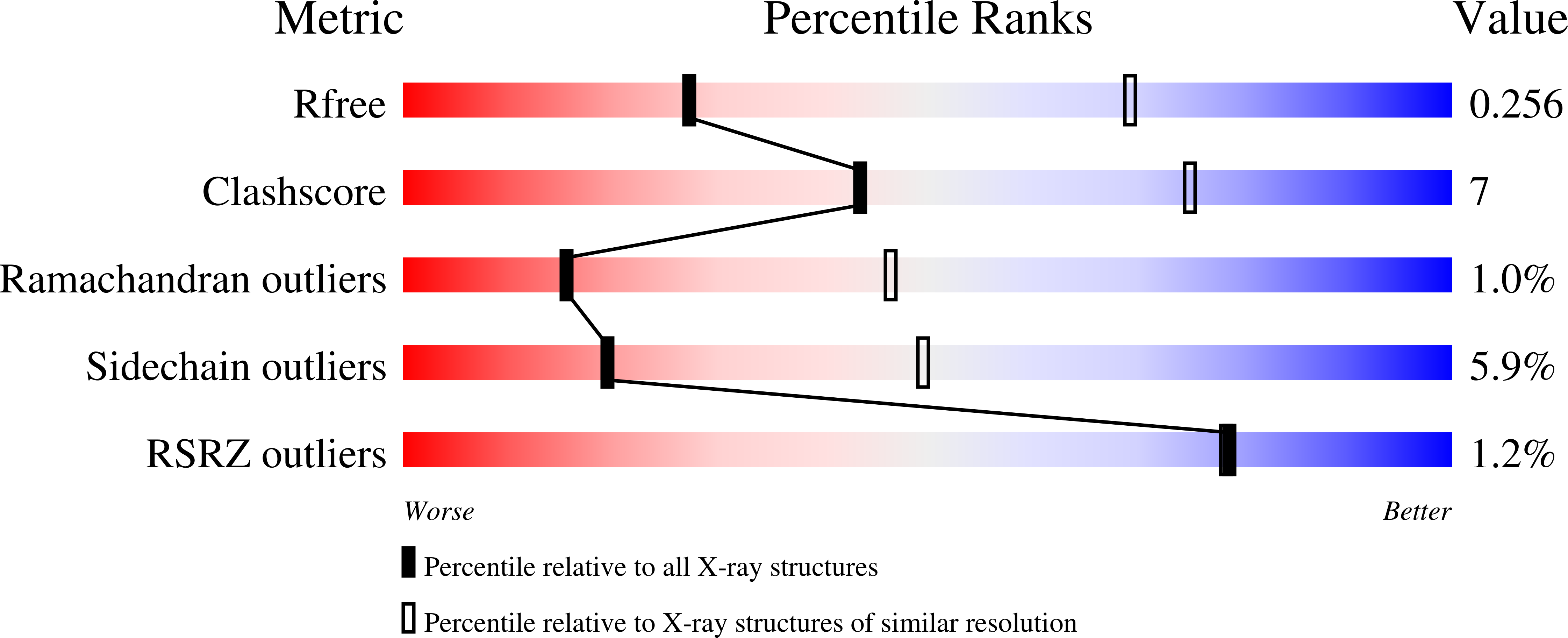Structure and function study of the complex that synthesizes S-adenosylmethionine.
Murray, B., Antonyuk, S.V., Marina, A., Van Liempd, S.M., Lu, S.C., Mato, J.M., Hasnain, S.S., Rojas, A.L.(2014) IUCrJ 1: 240-249
- PubMed: 25075345
- DOI: https://doi.org/10.1107/S2052252514012585
- Primary Citation of Related Structures:
4KTT, 4KTV, 4NDN - PubMed Abstract:
S-Adenosylmethionine (SAMe) is the principal methyl donor of the cell and is synthesized via an ATP-driven process by methionine adenosyltransferase (MAT) enzymes. It is tightly linked with cell proliferation in liver and colon cancer. In humans, there are three genes, mat1A, mat2A and mat2B, which encode MAT enzymes. mat2A and mat2B transcribe MATα2 and MATβ enzyme subunits, respectively, with catalytic and regulatory roles. The MATα2β complex is expressed in nearly all tissues and is thought to be essential in providing the necessary SAMe flux for methylation of DNA and various proteins including histones. In human hepatocellular carcinoma mat2A and mat2B genes are upregulated, highlighting the importance of the MATα2β complex in liver disease. The individual subunits have been structurally characterized but the nature of the complex has remained elusive despite its existence having been postulated for more than 20 years and the observation that MATβ is often co-localized with MATα2. Though SAMe can be produced by MAT(α2)4 alone, this paper shows that the V max of the MATα2β complex is three- to fourfold higher depending on the variants of MATβ that participate in complex formation. Using X-ray crystallography and solution X-ray scattering, the first structures are provided of this 258 kDa functional complex both in crystals and solution with an unexpected stoichiometry of 4α2 and 2βV2 subunits. It is demonstrated that the N-terminal regulates the activity of the complex and it is shown that complex formation takes place surprisingly via the C-terminal of MATβV2 that buries itself in a tunnel created at the interface of the MAT(α2)2. The structural data suggest a unique mechanism of regulation and provide a gateway for structure-based drug design in anticancer therapies.
Organizational Affiliation:
Molecular Biophysics Group, Institute of Integrative Biology, Faculty of Health and Life Sciences, University of Liverpool, L69 7ZX, England ; Structural Biology Unit CIC bioGUNE, Parque Tecnológico de Bizkaia, 48160 Derio, Bizkaia, Spain.




















